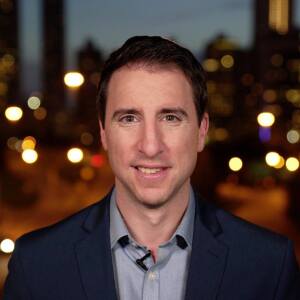ST. LOUIS — At a time when America is growing more diverse as a whole, recent studies have found that our cities and regions themselves are actually becoming more segregated.
According to census data, more than half of America’s metro areas have grown more segregated in the last 30 years. Many neighborhoods are almost entirely white, and some are almost entirely Black. Here is a look at what it means to live in an all- or nearly all-Black community from the people who live there:
Pastor Aaron Phillips | Union-Miles Neighborhood, Cleveland, Ohio
"I'm senior pastor of the Surehouse Baptist Church, here in the Union-Miles neighborhood. When I was a kid, the church I went to was all-Black. The elementary school I went to was all-Black. That’s what I was accustomed to. I didn’t know white people existed until I was bused from my neighborhood school way out in the suburbs somewhere.
“When I was a kid, Black communities across the nation were thriving. Today, things have drastically changed. Our neighborhood hasn’t kept up with neighborhoods outside of the Black community. Our homes who were thriving homes 30-40 years ago are now homes that are in dire need of repair and restoration.
“We don’t have the policing we need in the community to keep our neighbors safe. The Kentucky Fried Chicken that used to be open, it’s been closed for at least 30 years, but the building is still there growing to rot, and weeds are growing all around it. You see buildings that need to be torn down and rehabbed. That’s what you see.
"But you also see hope. You do see people that want to live here.
"Everyone knows each other. We are a part of this community here. You see people who are building new homes. We do see some hope in our community, and people come here to come to church here. We have a lot of flight … people who’ve left the city of Cleveland, who’ve left our neighborhood as well. The people who choose to be here now are people who are have been for years. We’ve got young adults who are choosing to live here because they want to see a change. But we also need the support of corporate America as well as the government, because it’s a win-win for everybody.
“The beauty of being in a large city is you can your own culture and still be diverse. Coming to the Black church is a different experience. And it should be. Coming to a Black neighborhood for a white person should be different. Sometimes we’re asked as Black Americans to forget our heritage and our history. We want to tell our story.”
James Clark | Jeff-Vander-Lou neighborhood, St. Louis, Mo.
“The reality is really sinking in, that the African American community has to begin to do what is necessary to rebuild. There’s no city plan. There’s no governmental plan that can restore family values and that can bring the neighborhoods back to how they were when I was coming up.
“The neighborhood was very, very caring … very, very loving. We grew up in a village where we looked out for one another. Me and my friends, we had the greatest time possible growing up in this very neighborhood. There were all kind of social service programs that were available to us. There were softball teams. There were football teams. You can look at this entire block … when I was coming up, every one of those parcels had a home on it.
“Now, this whole row of houses is vacant.
“You see individuals whose lives are trapped in drug addiction. We have totally bottomed out. And we cannot look for an external solution. African-Americans are going to have to accept the fact that nobody is going to come into our neighborhoods.
“Crack cocaine devastated this very neighborhood. I went to the Army in 1985. I came home, and the young boys that were riding their skateboards up and down this street, they were now selling crack. Now here comes fentanyl. You can walk around this corner and see the grip that fentanyl has on people.
“There is no pride. There is no pride. There is nothing that we can hang our hats on. I owe this neighborhood. This neighborhood loved me. Now this neighborhood needs love."
Evonne Bazemore & Janay Boucan | Stonecrest, Ga.
Evonne: “Stonecrest/Lithonia area is all we know. It’s really still home. Our mom still lives ten minutes down the road.”
Janay: “We grew up here in the Stonecrest/Lithonia area, so this is definitely our hometown. Stonecrest is a predominantly Black area. We actually have a new spot called the New Black Wall Street. Growing up, we didn’t own a lot of the businesses in this area. Now we have the New Black Wall Street, where there are several Black-owned businesses. All of them are Black-owned businesses. You can purchase Black jewelry, clothes, all that … yeah, you name it. It’s amazing to see us coming back and owning and operating our own businesses.
Evonne: “There’s Black people everywhere. It’s great. I love it here. We play our music. We get customers coming through the drive-through, like, ‘I love this song!’ And I’m like, ‘Yeahhhh …’ It’s a cultural thing. I don’t know how to explain it.
Evonne: “A lot of times, we have to learn how to code-switch at an early age … and we just don’t have to do that here. We can just be ourselves.”





